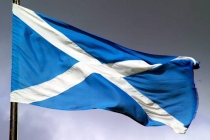Fairy Folk Of The Cairngorms
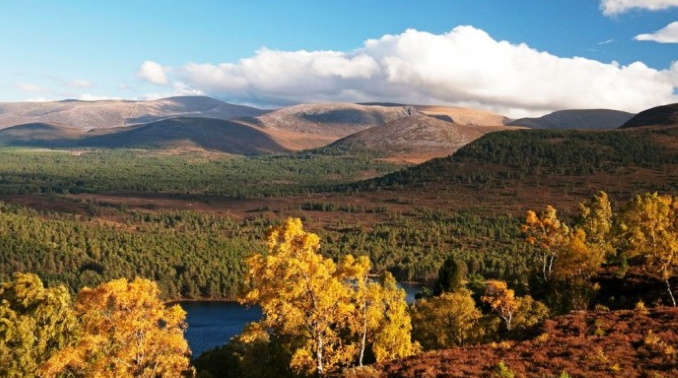
Cairngorms National Park (Scottish Gaelic: Pàirc Nàiseanta a' Mhonaidh Ruaidh) is a national park in northeast Scotland and covers the Cairngorms range of mountains, and surrounding hills. It is an area of outstanding natural beauty with mountains, forest paths, rivers, lochs and locations known for their abundance of wildlife. It is also, along with the rest of Scotland and indeed other parts of the Celtic world, rich in folklore.
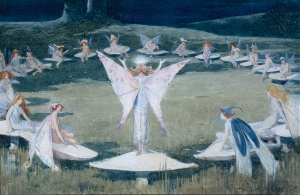
Celts had and continue to hold a great respect for the environment. Reflected in the folklore and mythology often attached to particular geographic locations. Celtic beliefs perceived the presence of the supernatural in every mountain, river, coastal feature, spring, loch, marsh, tree and rock formation. Within this tradition there is a strong link to animism and shapeshifting in Celtic mythology. There are also many stories about the little people and fairies. A belief, still widely held in some places, that humans and other creatures share their land with mystical non-human entities, rarely seen, but through custom treated with caution and respect. Not least because the little people are not always viewed as benevolent and can be quite sinister and dangerous.
An example of this is the story of Gaelic scholar and folklorist the Reverend Robert Kirk (9 December 1644 – 14 May 1692). His research involved investigating the strong belief held by the Gaelic peoples in the supernatural world of fairies and creatures of the Otherworld. He believed the Sleagh Maith or fairies was a fact in nature that could be investigated as a matter of scientific inquiry. He is quite well known in this regard and he became known as the "Fairy Minister". He was investigating the presence of the little people at Dun Sithean or Doon Hill which is close to the village of Aberfoyle in Scotland. One evening on the 14th May 1692 his body was found lying dead upon the hill. Stories soon grew of him having fallen into an unconscious state and the fairies of Doon Hill had carried off his soul. Local legend told that they were angry with him for his over attentive interest in their activities and secret domain.
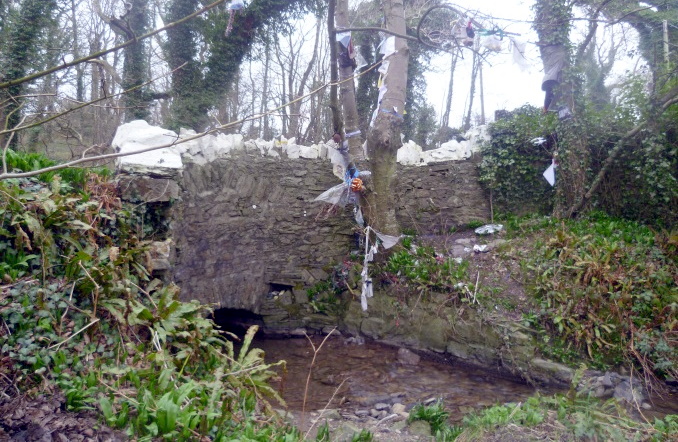
For the most part the memory of the little people is held in various place names around the Celtic lands. Such as the many 'fairy hills', 'fairy mounds', 'fairy glens' and 'fairy bridges'. Fairy Bridge is one such place on the Isle of Man (Manx: Mannin) where to this day most people will not cross without wishing good day to the little people for fear of causing offence and bringing themselves bad luck as a consequence. In the Cairngorms there are many such places, like Sithean Dubh da Choimhead (The Black Fairy Hill of the Two Outlooks)' Sithean Dubh da Choimhead (The Black Fairy Hill of the Two Outlooks). Loch Morlich close to which legend has it lives Donald the King of Fairies. Sometimes the hint of his presence is the sound of mysterious bagpipes. Then there are the fairies of Glen Cluny, who live below grassy hills and then come out on moonlit nights to dance upon the hill tops.
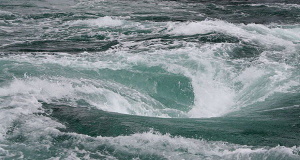
There are other places in Cairngorm that have attached to them stories of fairies and the little people. Not least of which is An Lochan Uaine (Green Loch). Lochan Uaine is known by the name the green loch because of the water having a greenish tinge. Local legend has it that this colour is created by the fairies who wash their clothes in the loch. This link in Celtic mythology to those of the Otherworld washing and causing changes to the environment is not confined to An Lochan Uaine. In Gaelic mythology (Irish, Scottish and Manx) Cailleach is a creation goddess. Many places are named after her and she is commonly known as the Cailleach Bhéara and in Scotland also as Beira, Queen of Winter. Associated with Cailleach is the Gulf of Corryvreckan which is a narrow strait between the islands of Jura and Scarba, in Argyll and Bute, off the west coast of mainland Scotland. Within it is Corryvreckan which is the third largest whirlpool in the world. Legend has it that she washes her great plaid in the Corryvreckan as winter approaches. The plaid being a tartan cloth slung over the shoulder as a kilt accessory, or a plain ordinary blanket. This is the sign that autumn is changing to winter. When she is finished washing, the cloth is pure white, and becomes the blanket of snow that covers the land.
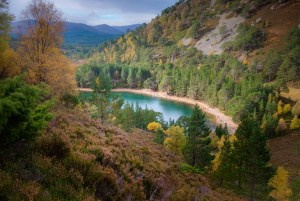
Other than the legend of the fairies washing their clothes in An Lochan Uaine the loch certainly does not hold any sinister presence or feeling. It is one of the most beautiful of the many lochs in the Cairngorm area. Located as it is beside the mountain of Sgor an Lochain Uaine (also known as Angel's Peak) it is noted for being a wonderful place to relax and view some of the best scenery that Scotland has to offer. The green appearance of the loch adds to the tranquility. So long may the fairies of An Lochan Uaine continue to wash their clothes in the loch and long may we continue to celebrate the folklore of the Cairngorms.
Content type:
- Scottish
Language:
- English

